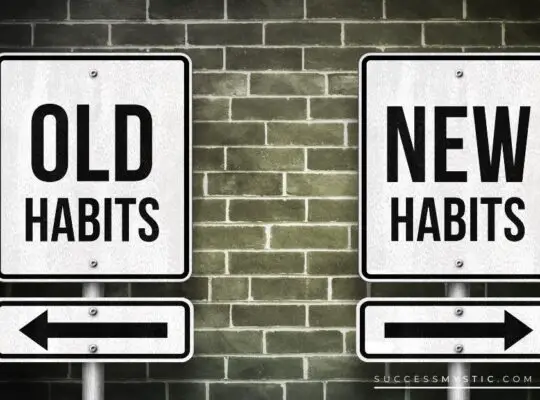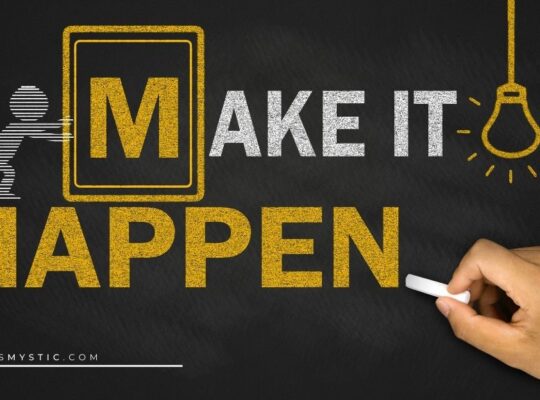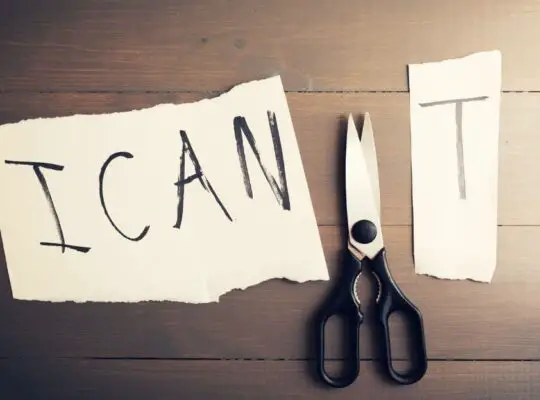The Face Of Change
Change is difficult. Not just hard, not just challenging, not just effortful, but brutally difficult. Many dedicate their lives to change with little or no success, and those who do make progress with change may place this accomplishment among the great achievements of their life. If there is one thing that is universal about change it’s that it is difficult.
We know that change is not easy simply based on the billion-dollar industries dedicated to helping people achieve lasting change. There are numerous industries designed to help change your eating habits, relationships, physical health and wellness, addictions, career path, happiness, mental health, time management, parenting abilities, and education. All of this is designed to help change your current state to an improved and enhanced state. If change was so easy, these industries would be out of business.
Even with all this highly developed support, why do so many people fail at this task? Research, performed by the University of Scranton on New Year’s Resolutions, indicates that 92% of people will fail at their resolutions. And this particular study is not an outlier.
A poll performed by medium.com indicated that 96% of people will completely fail their personal development efforts. Another study performed by JG. Polavieja and L. Platt published in the journal of Social Forces indicated that only 6% of adults accomplish their childhood vocational dream.
So why is change so hard? There may be a wide range of reasons why it can be difficult to change, but at the fundamental level it comes down to this: do we really know what it takes to change? Is change just a trial and error method until we seem to get results? Or is there a proven formula we can follow? While there is no one size fits all method, there are steps that can significantly increase your likelihood for successful change.
It is then imperative for you to understand what it really take to change, to give yourself the best chance at making lasting and positive change in your life.
Start With The Right Mindset
It all begins in the mind. Any discussion of change has to start here. If you get this wrong, nothing else will matter. You cannot simply overcome a poor mindset with good plans, tips, or life hacks. An improper mindset is just too powerful.
As Bruce Lee once said: “as you think, you shall become.” So, our discussion of understanding what it takes to change must start here.
1| Realize You Need To Change
A person who does not think they are sick does not think they need to see a doctor.
This is why the first mindset you need to adopt is to understand that you need to change. This is a lot easier said than done as this requires a significant self-evaluation. But the best way to realize that you need to change is to identify the proper signs and symptoms in yourself.
Like a sick person that recognizes certain signs and symptoms in themselves (and then realize they need to see a doctor), these signs and symptoms can make you realize that you may need to change.
When evaluating yourself be looking for things such as:
- Fatigue: low energy can indicate that you are engaging in activities that are unhealthy for you and need changing
- Lack of emotions: A decrease in your daily feelings, especially to events and situations that once evoked emotion.
- Deteriorating Relationships: When several relationships are in some degree of conflict.
- Lack of fulfillment: When the activities that you are engaged in no longer satisfy your desire for purpose.
- Nothing is good enough: If you are always looking for something that is better than what you currently have.
- Mood swings: If your emotional state seems to fluctuate easily.
- Holding a grudge: If you are unable to move past situations despite attempts at resolution.
- Lack of accountability: You don’t follow through on the things that you say.
When you self-identify an overwhelming list of symptoms you then realize that change is needed.
2| Realize You Can Change
Just realizing that you need to change is not the only mindset that you need to adopt. Next, you need to realize that you are able to change.
Realizing that you can change is a process that can take some time, but possible to obtained. One of the best ways to realize this is to connect with others that have made the change you are looking to do. Nothing is more motivating than talking with those who have finished the race you are looking to run.
Seeing is the first step in believing. This is why you need to keep these examples at the forefront of your mind. Return to them often and use them as motivation to propel your belief that you are able to make the change yourself.
3| Realize You Want To Change
Finally, you need to realize that you are the one that wants to change. You need to come to the conclusion that change is occurring for you. Change cannot ultimately rest upon outside influences. If it does, it will not survive the long haul. This is not to discount the motivation that can be derived from outside sources. Yet, in the end, the desire needs to come from within.
This is why this is the most critical of the 3 mindsets. Your inner desire to change is the catalyst for the other mindsets discussed. All are necessary, but this inner desire for change brings along with it advantages that the others do not.
Understanding that you must have the proper mindset in order to achieve lasting change is absolutely vital. This lesson cannot be skipped. If you don’t feel that you have a complete grasp of this subject matter, it is advisable to rerun this lesson again until you do grasp it. Yes, it’s that important.
Have A Strategic Plan
Rarely does a person simply wonder into success. To achieve success, they follow a path. A modern example of this is Howard Schultz, CEO of Starbucks Coffee.
When Schultz was in his late 20’s he went to Italy for the first time. It was here that he had his initial experience with an Italian cafe. He immediately sensed something different in these cafes. He noted that they buzzed with excitement. They created environments that allowed for human engagement to occur. He noticed was that these cafes not only provided coffee, but also served as a center for community.
Shultz came back to America with a plan. In 1987 he bought a small company of 6 coffee shops named Starbucks. 31 years later, Starbucks has over 27,000 stores in over 60 countries around the world. According to Starbucks, they serve nearly 80 million customers per week. This didn’t happen by chance.
Schultz had a plan on how to change the company and in the process the coffee industry. The plan was the vehicle that changed his vision into reality.
In order to fully understand what it takes to change, you need to grasp how to develop a proper strategic plan. A good strategic plan will contain several key items.
1| The What
Initially, you need to define what it is that you are needing to make a plan for. “What is the area or task you are planning?” “What it is that I am wanting to change?” Clearly and specifically identifying what it is that we are attempting to change sets the ground work for a good plan.
2| The Why
Once you have identified the “what” of your plan, then you need to address the “why.” “Why do I want to make this plan?” “Why is this plan important to me?” Ultimately, this is highlighting the motivation and passion behind your plan. The “why” provides the fuel for the action that occurs as the plan is carried out.
3| The Goals
Any good plan must have properly defined goals. Goals are what allows us to determine what success will look like. They give us a finish line to direct our efforts towards.
According to Michael Hyatt, CEO of Thomas Nelson Publishers and creator of the Full Focus Planner, goals need to follow the SMARTER format:
- Specific: Your goals needs to be specific as to what you are trying to accomplish.
- Measurable: If you are unable to measure your goal, how will you know if you have achieved it?
- Action: Your goal needs to have movement to it. It needs to lend itself to actionable items.
- Risky: Your goal needs to push you out of your comfort zones. This places some urgency to your goal.
- Time: Your goal needs to have a time frame attached to it. An open-ended goal is a goal that will always be accomplished down the road.
- Excitable: Your goal needs to give you energy and passion. It should reflect something you are interested in accomplishing.
- Relevant: Your goal needs to be connected to the objective at hand.
4| Accountability
Your strategic plan needs to incorporate some form of accountability. Without follow through, the best made plans are laid to waste. Accountability is the mechanisms by which you move from “this is what I want to accomplish,” to “this is what I did accomplish.” It’s what gives traction to your plan.
When it comes to your strategic planning, the accountability will ultimately rest on your shoulders. Yet, don’t be weighed down by it.
There are several components that can enhance your accountability.
- Don’t make excuses: Don’t giving yourself the ability to justify your failures. Instead, acknowledge what has gone right and what has gone wrong and problem solve.
- Own the responsibility: taking ownership gives you a sense of investment. Your accountability increases the more you have invested.
- Be in control: Don’t allow yourself to be at the effect of your environment. Being able to control your environment allows you to attack your plans from a position of authority.
Your mission to really understand what it really takes to make lasting changing includes knowledge of strategic planning. A good strategic plan includes: the what, the why, the goals (the how), and accountability. Now build your plan.
Develop your road map to change. Construct your plan to put your vision into reality. Once this is complete, you need to execute. To do this, you need to develop the characteristics of a good soldier and enter the war zone.
A Good Soldier
“My fist wish is to see this plague of mankind, war, banished from the earth.”– George Washington
War is not pretty as any history student of the 20th century will be quick to tell you. According to Wikipedia the 20th century saw 31 different wars in which somewhere between 136-150 million people died. The 20th century saw 2 World Wars that incorporated nearly the entire planet. In World War II 60 million people died, which was about 3% of the population at that time.
The wars of the 20th century taught the world in hardships, struggles, pains, fears, sadness and many other difficult lessons. But some of the 20th century wars taught lessons you can apply to understanding what it really takes to change.
There are certain characteristics that are seen in the soldiers who obtain victory in war. In other words, there is a commonality of traits these soldiers possess. So, what are those characteristics?
1| Courage
We know warfare is not easy, and neither is change. The good soldiers, that seem to rise to the top, all display an amazing amount of courage. Yet, if you listen to them talk about courage, you will quickly understand that it is often a very misunderstood characteristic.
You may see people every day who are engaging in actives that seem difficult and hard. You admire that they are able to accomplish the seemingly impossible. You applaud their ability to not be scared off by the risk involved.
They seem fearless at activities that could clearly go wrong at any moment, and you conclude that they must have a lot of courage. They must have courage because they seem to lack the evidence of fear or self-doubt. Nothing could be further from the truth.
Courage is not the lack of fear and self-doubt, but the ability to engage in the activity despite the presences of those feelings. You see, most believe that they do not poses courage, because the fear and self-doubt are present. The two are not mutually exclusive, but can and do, co-exists.
When you come to this realization you are able to start accessing your courage.
2| Relentlessness
Failure is not an option. Good solders present with this attribute of relentlessness. They know that they can’t fail, so they are relentless in their mission.
The same is true when it comes to change. This doesn’t mean there won’t be disappointments from time to time or occasionally have setbacks. But what it does mean is that you won’t stop when the going gets tough.
This is the essence of relentlessness. The continual, steady, and persistent effort towards a goal. It doesn’t stop until you succeed. What then does relentlessness consist of? Well, there are several ingredients to relentlessness, but the main ingredient is focus.
Relentlessness is focus in action. When you are focused on a task you give it 100% attention until you succeed. So, get rid of all the distractions and focus on that one important thing. Block out all those unnecessary distractions as they take your attention off the direction that you are going. You may need to put horse blinders on.
Horse blinders are pieces of cup shaped material, usually leather, that are placed on either side of the horse’s eyes. These blinders block the side vision of the horse, allowing the horse to focus only on what is in front of him. He does not get distracted by the things around him. Blinders not only keep the horses from getting distracted, but also from getting spooked by things around them.
Develop your relentlessness by putting on horse blinders to keep you focused on the task at hand.
3| Discipline
Soldiers are defined by discipline. Without it no army is able to win a battle let alone a war. The same is true for those who are successful at enacting change. These people are defined by discipline.
Discipline is the practice of training people to obey rules or a code of behavior. In particular self-disciplines objective is to control certain self-behavior in order to achieve a favorable result. In our current context, this favorable result would be the change we are seeking.
Discipline is not at skill that comes naturally. On some level, this skill needs to be developed in everyone. Some may need to develop more than other, but no one is born with a strong sense of discipline. Fortunately, It is a characteristic that can be developed.
Implementing some of these concepts will help improve your discipline
- Build a schedule: Routine is the cousin of discipline. Build a daily, weekly, and monthly schedule. This allows you to be able to control your behaviors with less concentrated effort.
- Be OK with pain: Discipline will always involve some level of discomfort, but this type of pain is for your benefit.
- Get competitive: Competition can provide the needed fuel to propel your self-discipline.
- Avoid short term pleasures: These types of experiences focus only on the present, and this is like cancer to discipline. It infects one behavior and then spread to others.
- Cling to long term rewards: These types of rewards allow you to concentrate on the entirety of the issue to build discipline.
The great thing about discipline is that it is like compounding interest. The more you engage in it and practice it, the more it grows and the easier it becomes.
4| Perseverance
Sometimes war can be a war of attrition. According to Wikipedia, This type of war is when you are attempting to wear down the enemy through causing continuous losses in personal and material. The word attrition comes from the Latin root “atterere” which means to rub against or “grinding down”. Good soldiers, like those who achieve change, are able to persevere by make small progressives gains over a long period of time.
Creating true and lasting change also can be a war of attrition that requires perseverance. It requires making small progressive and consistent change over time.
Fortunately, this characteristic can also be developed by implementing several key components.
- Believe: Have confidence in what it is you are involved in. Trust that you are going to accomplish the change that you are perusing and that the undertaking is a worthy cause.
- Model: Find others who have already accomplished what you are trying to do. Gain insight into what they found to be successful and what obstacles they encountered on their journey. Knowing others that have already crossed the finish line assist you in completing the race.
- Commit: Sign a contract with yourself pledging to accomplish the change. Putting pen to paper increases the seriousness of your pledge to this change. Making a commitment to yourself pushes you to keeping going and not give up on yourself.
- Practice: Master change by practicing small changes each day. When you are consistently rehearsing change, you know what to expect. You can lean on these experiences to build your perseverance.
- Vulnerability: Being open and honest with yourself allows you to grow in perseverance as you grow in reality.
- Celebrate: Have fun when you accomplish your goals. Enjoy the ride, it’s meant to be fun. When you are enjoying life’s moments frequently, you will be able to persevere during the hard times.
4| Patience
In war there can be a lot of waiting. Short times of action are interspersed with lengthy chunks of a nothingness. Good soldiers have patience with handling these situations. Change requires the same type of patience. The process of change is not always exciting and seldom marketed by large gains. Instead it can be very slow and require a lot of patience.
There are many reasons why patience is considered a virtue. One particular reason is because those who poses patience have mastered the ability to be content with the present state of things. Meaning, they are OK with the present. This does not mean complacency, but not being in a state of hurry.
People achieve this state because they know that they have put all the effort they should. They are engaged in the proper steps needed for change to occur. The process will complete itself in due time. Therefore, they are not worried about excelling the process faster than it should. They have patience.
When aiming to gain a full knowledge of what it takes to change yourself, there needs to be an understanding of what personal characteristics you must poses. The unique characteristics needed are very similar to those of good soldiers in war. Developing your courage, relentlessness, discipline, perseverance, and patience allows you to attack each attempt to change in a manner that assures victory
Install A Security System
When you want to keep something safe you install a good security system. One of the most secure places in the United States of America is the White House.
The White House has taken extreme measures in its security. Some of the more advanced security measures the White House has taken are
- A no-fly zone over the White House
- Pressure triggered alarms in the White House lawn
- Built proof glass in the entire building
- Roof top guards
- A safe room bunker for personal
These are just a few of the measures taken, but the reasons that such extreme measures are implemented is because of the value that is placed on the White House and what it contains. This same intensity of value needs to be placed on the change that you have accomplished and what it contains.
Once change has initially been achieved, you need to take a few important measures to keep it safe. In essence, you need to install a good security system. A good security system will be able to detect both internal and external threats and alert you of their danger.
Change is not easy and to make lasting change you need to understand what it really takes. You need to have the right mindset for change to occur. You need to make a strategic plan for your change. You need to express or develop good characteristics traits that allow you to attack your change with effectiveness.
Finally, you need to install a security system to protect your change. Once you have learned these concepts and implement them fully, you have a fighting chance to really make a change.







